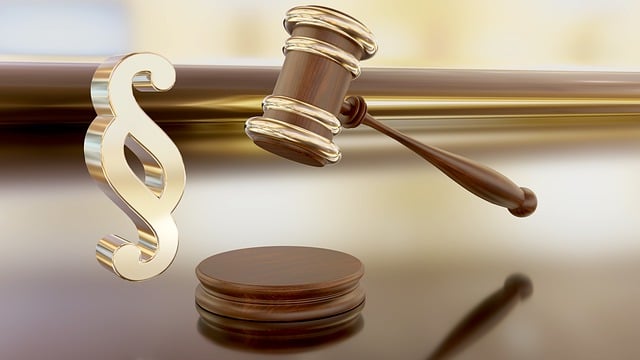Navigating personal injury claims demands a deep understanding of required Evidence Needed for a Personal Injury Claim. This includes medical records, witness statements, expert opinions, and visual documentation to prove negligence, damages, and causation. The complexity varies based on injury severity. Effective claims hinge on comprehensive documentation and compelling narratives presented by specialized attorneys. For businesses, strategic planning and transparency can prevent legal disputes. Securing justice in these cases requires meticulous evidence gathering and systematic presentation to overcome legal complexities.
Litigation types vary widely, each with distinct strategies and evidence requirements. This article guides you through the complex landscape, focusing on personal injury claims—a deep dive into the evidence needed for these cases. We explore common legal battles, strategies employed, and key players involved. Additionally, we scrutinize the impact of effective evidence presentation in court cases, highlighting its role in achieving favorable outcomes.
- Understanding Different Types of Litigation
- Personal Injury Claims: A Deep Dive into Evidence Requirements
- Common Legal Battles: Strategies and Key Players
- The Impact of Effective Evidence Presentation in Court Cases
Understanding Different Types of Litigation

Understanding different types of litigation is crucial for both plaintiffs and defendants in navigating legal proceedings effectively. Each type of lawsuit has its unique characteristics, including the evidence needed to support claims. For instance, personal injury cases require substantial proof of negligence, damages, and causation to secure a winning challenging defense verdict. The evidence needed for such claims often includes medical records, witness statements, expert opinions, and photographs of injuries or accident sites.
In high-stakes cases involving corporate and individual clients, the complexity increases significantly. These litigation types demand a thorough understanding of legal principles, strategic planning, and robust evidentiary support. Whether it’s corporate dispute resolution or complex individual lawsuits, the goal remains to present a compelling case that stands out in a crowded legal landscape.
Personal Injury Claims: A Deep Dive into Evidence Requirements

Personal Injury claims require a meticulous presentation of evidence to establish liability and damages. When pursuing such a claim, it’s crucial to understand the specific Evidence Needed for a Personal Injury Claim. This can include medical records detailing injuries and treatments, eyewitness accounts describing the incident, and photographs or videos capturing relevant scenes or impairments. The complexity of these cases varies widely, reflecting the diverse nature of personal injuries—from minor wounds to severe disabilities.
Across the country, successful personal injury claims often hinge on robust documentation and persuasive storytelling. In jury trials, attorneys meticulously weave together this evidence to convince the jurors of their clients’ experiences and the responsible party’s negligence. This process demands a thorough investigation and organized presentation of facts to ensure a compelling case that can lead to just compensation for the harmed individual.
Common Legal Battles: Strategies and Key Players

In many legal battles, understanding common types of litigation and their unique strategies is key to navigating a successful outcome. Personal injury claims, for instance, require a meticulous approach due to the specific evidence needed. To prevail, plaintiffs must present compelling evidence such as medical records, witness statements, and expert opinions detailing the extent of injuries and liability. This process involves key players like attorneys who specialize in personal injury law, helping clients understand their rights and gathering essential documentation.
Avoiding indictment is a common concern, especially in cases where business interests or philanthropic and political communities are involved. Each respective business must ensure its actions adhere to legal boundaries, as strategic planning and compliance can help prevent unwanted litigation. Effective communication and transparency among stakeholders can also serve as proactive measures, fostering an environment that discourages unnecessary legal disputes.
The Impact of Effective Evidence Presentation in Court Cases

In personal injury claims, the presentation of evidence is paramount to achieving justice. Effective evidence can turn the tide of a case, highlighting the extent of injuries, proving liability, and justifying compensation. It’s not merely about presenting facts; it involves crafting a compelling narrative that resonates with jurors or judges. The right combination of medical records, expert testimonies, photographs, and witness statements can paint a clear picture of what happened and how it has impacted the plaintiff’s life.
This is especially crucial given the complexity of personal injury cases, which often involve white-collar and economic crimes. Across the country, these intricate matters demand meticulous evidence gathering and presentation to ensure extraordinary results. By systematically organizing and presenting evidence needed for a personal injury claim, plaintiffs can navigate the legal labyrinth and secure the compensation they deserve.
Understanding the various litigation types equips individuals with valuable knowledge, enabling them to navigate legal battles effectively. From personal injury claims, where the evidence needed is crucial, to common legal disputes, recognizing strategic key players is essential. Mastery of evidence presentation techniques significantly impacts court outcomes, making it a pivotal aspect for any litigant. By grasping these concepts, folks can foster a stronger, more informed approach in today’s legal landscape.






